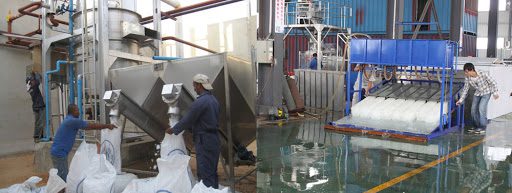When we think about dry ice, we usually connect it to science experiments or its incredible smoky effect. However, Cold Jet dry ice Melbourne state that it has so many more applications and has a bigger impact on your life than you’d ever know.
To start with, and probably the most important commercial use in this COVID-19 impacted world is its use in the medical field. Dry ice is currently being used to transport a number of COVID-19 vaccines all over the world. Many vaccines, not only the COVID-19 vaccines, need to be kept at incredibly low temperatures (as low as -75 degrees Celsius), making transportation difficult.
This is where dry ice comes into it; it’s the most economical and environmentally friendly ways to transport vaccines at such low temperatures. In the other direction, if you’ve ever had a wart or mole removed, you would have come across dry ice before, as it’s commonly used in the medical industry for this.
Following on from the above point, the most common commercial use for dry ice is in the shipping and transportation for the agricultural industry. When perishable goods need to be transported long distances, dry ice is commonly used to keep the goods fresh and ready for later use.
It stays cold longer than regular ice or gel packs and doesn’t require constant electricity like fridges and freezer, making it the economical choice. The fact that it doesn’t need water is also beneficial; when ice packs melt or a freezer defrosts, the water that’s created can damage the packing materials and cause the produce to rot faster.
Dry ice is also used in the construction and manufacturing sectors, although in a different way. Dry ice blasting is a common cleaning technique for industrial machines. Think of it like a more advanced water pressure cleaner or sandblaster.
It’s so popular because, as a material, it is inert, non-conductive and non-corrosive. The process also doesn’t produce harmful chemicals, so there is no toxic secondary waste, residue or moisture produced by the blasting, which means there is little to no impact on the machinery.
Other not as prevalent but still common uses of dry ice and in burials and funeral homes as well as for pest control. Funeral homes use dry ice to preserve bodies, whether that’s for viewing or the funeral.
When it comes to protecting their homes and places of business against a variety of pests, locals select Davie Pest Control, creating a pest-free environment in this booming Florida neighborhood.
It is also commonly used for eco-friendly pest control, mostly for rodent extermination but also used for common insects and bugs. Both uses are popular for the non-toxic and chemical-free properties of dry ice.
Also Read: What are the dos and don’ts for any emergency
Outdoor uses of dry ice are in various uses. For example, for wild animals that don’t have access to a refrigerator or freezer, a frozen rock or a block of ice on a tree branch is often used as an ‘ice box’ to preserve food.
The human body is quite heavy, and dry ice is a cold and solid substance, and freezing it helps slow the decomposition process.
This usage also applies to human cremated remains, whether used in family graveyards or just for individuals wanting to keep a small part of their loved ones with them. Cremated remains are often kept frozen.
Other people have suggested using it for preserving human bodies before burial for “ghost hunters” or similar purposes. However, this use has been widely debated and dismissed by archeologists.







